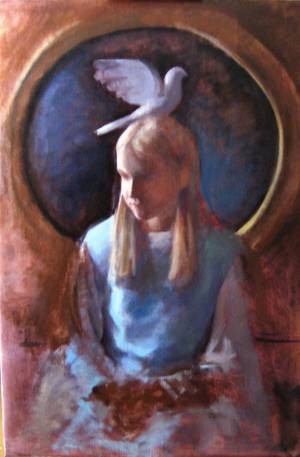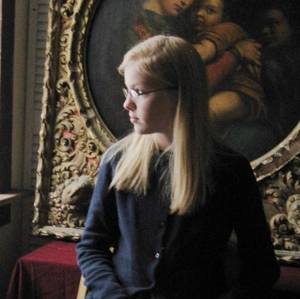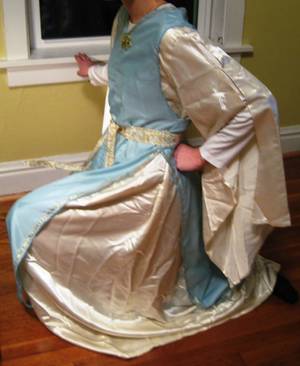
 HERE WAS A particular scene depicted by Sigrid Undset in her biography of St. Catherine of Siena that struck me deeply. One day her father was about to interrupt her while she was at prayer in her room in order to remind her to do her work. He stopped when he saw her, however, because he witnessed the Holy Ghost in the form of a dove above her head.
HERE WAS A particular scene depicted by Sigrid Undset in her biography of St. Catherine of Siena that struck me deeply. One day her father was about to interrupt her while she was at prayer in her room in order to remind her to do her work. He stopped when he saw her, however, because he witnessed the Holy Ghost in the form of a dove above her head.
After deciding to paint this image, I took the following steps:
Step 1: I sketched several compositions and selected the one with the most pleasing silhouette, color, and value scheme.
Step 2: I found a model who was willing and able to commit many hours of sitting for me on a regular basis.
Step 3: I selected the shade of blue that was most complimentary to the model’s skin tone and sewed her costume.
Step 4: I set up a location complete with background and props illuminated by north light.
Step 5: I stretched linen and prepared the surface for painting.
The painting is not yet finished, but I will be posting an image of the final work very soon. I wanted to share this process because most people don’t realize the difference in quality that can be attained between working from a photograph and working from life. It is far more difficult and much more of a hassle to do things this way rather than use Photoshop for a reference, but I believe that the results are worth it.



